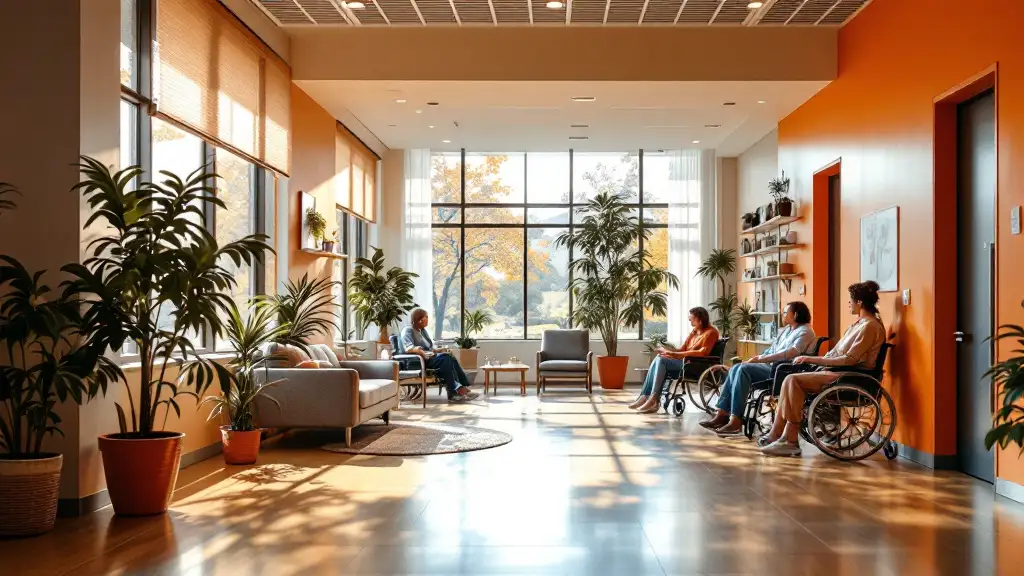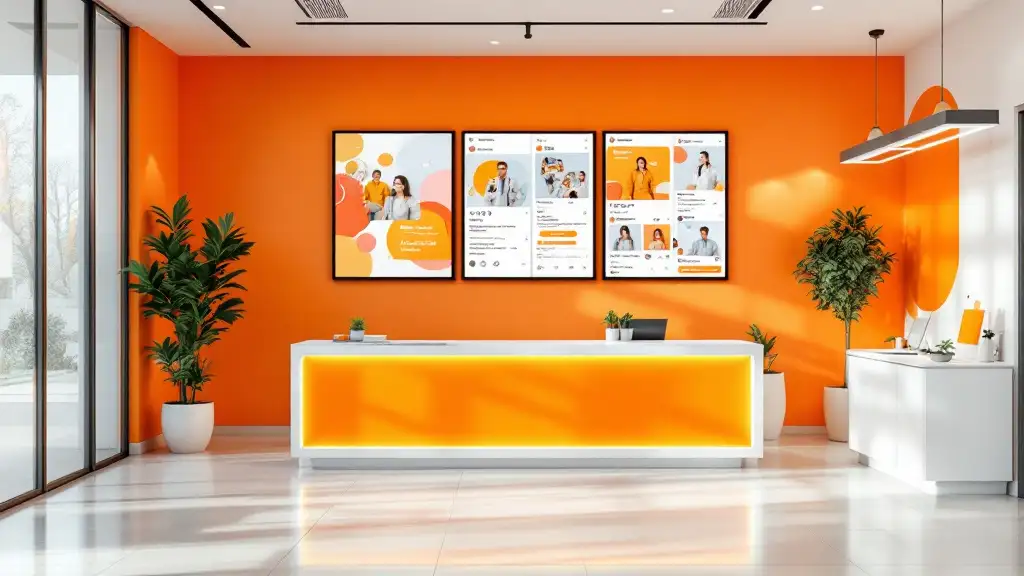Understanding Local SEO Assisted Living Statistics
One such strategy that has proven to be essential is local search engine optimization (SEO).


Understanding Local SEO Assisted Living Statistics
Importance of Local SEO for Assisted Living
In the highly competitive industry of assisted living, implementing effective marketing strategies is crucial for attracting more residents and standing out from the competition. One such strategy that has proven to be essential is local search engine optimization (SEO). Local SEO focuses on optimizing online presence to ensure that the facility's website is prominently displayed when users search for relevant terms such as "assisted living near me" or "55+ communities Florida" [1].
Impact of Local SEO
Local SEO for assisted living facilities has a significant impact on generating qualified leads and driving potential residents through the sales pipeline. It ensures that the facility's website is visible to individuals actively seeking senior living options in their local area. By advancing the website's presence on popular search engines, local SEO delivers the most qualified leads among digital marketing channels.
Benefits of Local SEO
Implementing local SEO for assisted living communities brings several benefits. Firstly, it increases the visibility of the facility's website, making it more likely to be discovered by potential residents and their families. By optimizing location pages with relevant keywords and ensuring accurate and consistent information across online directories and review sites, local SEO enhances the facility's online presence and improves its chances of being found during local searches [2].
Secondly, local SEO helps build trust and credibility among potential residents and their families. By actively managing online reviews and ratings, assisted living facilities can establish a positive online reputation. Positive reviews and high ratings can influence the decision-making process of individuals searching for senior living options, making them more likely to choose the facility.
Furthermore, local SEO assists in targeting the specific audience that the assisted living facility aims to attract. By optimizing the website for local searches, the facility can reach individuals who are actively seeking senior living options in their area. This targeted approach increases the chances of connecting with potential residents who are more likely to convert into actual residents [2].
In summary, local SEO plays a vital role in the marketing strategy of assisted living facilities. By optimizing their online presence and ensuring visibility in local searches, these facilities can generate qualified leads, build trust, and connect with their target audience. Implementing local SEO, along with other effective digital marketing techniques, can significantly boost the business of senior living communities [1].
Read: Local SEO Healthcare Statistics Unveiled
Digital Marketing Success Stories
In the realm of assisted living, digital marketing plays a crucial role in reaching and engaging with potential residents and their families. One notable success story in this domain is the case of Maryland Assisted Living, which experienced remarkable results through its digital marketing efforts.
Case Study: Maryland Assisted Living
Maryland Assisted Living, located in the Greater Baltimore area, embarked on a comprehensive digital marketing campaign to enhance its online presence and attract more residents. Within three months of implementing their digital marketing strategy, the facility witnessed a significant transformation, going from a 50% census to a full 100% census. This incredible outcome speaks to the effectiveness of their approach in capturing the attention of their target audience and inspiring action [3].
Successful Strategies Implemented
The success of Maryland Assisted Living's digital marketing campaign can be attributed to a combination of effective strategies. Their approach included:
- Search Engine Optimization (SEO): The facility focused on optimizing various aspects of their website, such as page titles, meta descriptions, internal linking, and the creation of localized landing pages and service-specific pages. These efforts helped to improve their visibility in search engine results and attract organic traffic [3].
- Link Development: Maryland Assisted Living engaged in link development activities, building high-quality backlinks to their website. This practice boosts their authority and credibility in the eyes of search engines, ultimately leading to higher rankings and increased visibility.
- Content Marketing: The facility recognized the significance of fresh and informative content. They regularly published blog posts on their site, providing valuable insights and information related to assisted living and senior care. This content not only attracted website visitors but also helped to establish Maryland Assisted Living as a trusted resource in the industry.
- Local SEO: A vital aspect of their strategy was optimizing their Google Business Profile. This involved cleaning up citations, building new local citations, and amplifying their presence in the local market for key phrases relevant to their services. By enhancing their local SEO efforts, Maryland Assisted Living ensured that they appeared prominently in local search results, increasing their visibility to potential residents.
- Pay-Per-Click (PPC) Marketing via Google Ads: To further bolster their search engine presence, Maryland Assisted Living leveraged Google Ads. They targeted specific zip codes in their local area, ensuring their ads were displayed to individuals actively searching for assisted living, memory care, respite care, and luxury options. This targeted approach helped them connect with the right audience and generate qualified leads.
By implementing a comprehensive digital marketing strategy that encompassed SEO techniques, content marketing, local SEO, and Google Ads, Maryland Assisted Living achieved remarkable results in a relatively short period. Their success serves as a testament to the power of digital marketing in the assisted living industry, showcasing the potential for other facilities to achieve similar outcomes.
Key Elements of Senior Living SEO
To effectively market senior living facilities and attract more residents, implementing SEO strategies is crucial. SEO, or Search Engine Optimization, focuses on improving a website's visibility on search engines, making it more likely to be discovered by potential residents searching for relevant terms such as "assisted living near me" or "55+ communities Florida". Let's explore the key elements of senior living SEO, including the techniques used and the optimization process for search engines.
SEO Techniques for Senior Living
Implementing effective SEO techniques is essential for senior living communities to generate qualified leads and drive potential residents through the sales pipeline. Here are some key techniques used in senior living SEO:
- Keyword Research: Conducting thorough keyword research is the foundation of any successful SEO strategy. By identifying relevant keywords and phrases commonly used by those seeking senior living options, you can optimize your website's content and structure accordingly. This helps search engines understand the relevance of your website to specific search queries.
- On-Page Optimization: On-page optimization involves optimizing various elements within your website, including meta tags, headings, URLs, and page content. By incorporating target keywords naturally and strategically throughout these elements, you can improve your website's visibility in search results.
- Content Marketing: Creating high-quality, informative content is crucial for senior living SEO. Publishing relevant blog posts, articles, and guides can not only attract and engage potential residents but also improve your website's search engine rankings. Content should be optimized with target keywords and provide valuable information to your target audience.
- Link Building: Building high-quality backlinks from reputable websites is an effective way to boost your website's authority and improve its search engine rankings. Engaging in outreach efforts, guest blogging, and creating link-worthy content can help attract quality backlinks from relevant sources.
Optimization for Search Engines
Optimizing a senior living website for search engines involves various techniques to improve its visibility and ranking. Here are some key aspects of SEO optimization for search engines:
- Technical SEO: Ensuring that your website has a solid technical foundation is essential. This includes optimizing website speed, improving mobile-friendliness, implementing proper URL structures, and creating an XML sitemap. Technical optimization helps search engines crawl and index your website efficiently.
- Local SEO: Local SEO is crucial for senior living facilities as they primarily serve a specific geographic area. Optimizing your website for local search involves creating and optimizing Google My Business listings, obtaining positive reviews from residents, and ensuring consistent and accurate NAP (Name, Address, Phone number) information across online directories.
- User Experience: Search engines prioritize websites that provide a positive user experience. Optimizing elements such as website navigation, page load speed, mobile-friendliness, and responsive design enhances user satisfaction and improves search engine rankings.
- Regular Updates: Search engines favor websites that regularly update and refresh their content. By regularly adding new blog posts, articles, and other valuable content, you can demonstrate to search engines that your website is active and relevant.
Implementing these key elements of senior living SEO can significantly impact the visibility and success of your website. Remember that SEO is an ongoing effort that requires continuous adjustments and improvements. By staying up to date with industry trends and best practices, you can ensure that your senior living facility stands out in search engine results and attracts the attention of potential residents.
Leveraging Google Ads for Senior Living
To effectively reach and engage with the target audience in the senior living industry, leveraging Google Ads can be a powerful digital marketing strategy. By implementing a well-planned Google Ads campaign, assisted living facilities can increase their visibility, attract qualified leads, and ultimately drive conversions. Two important aspects of utilizing Google Ads for senior living are the overall strategy and targeting a specific audience.
Google Ads Strategy
A successful Google Ads strategy for senior living involves careful planning and execution. It's important to define clear goals and objectives before launching any advertising campaigns. This may include increasing website traffic, generating leads, or boosting occupancy rates. By setting specific goals, assisted living facilities can tailor their Google Ads campaigns to achieve desired outcomes.
Additionally, conducting thorough keyword research is essential to ensure that the ads are targeting relevant search queries. Assisted living facilities can use keywords related to their services, such as "assisted living," "memory care," "respite care," or "luxury," to reach individuals actively searching for these specific types of senior living options.
To maximize the effectiveness of Google Ads, assisted living facilities should consider utilizing ad extensions. These extensions allow for additional information to be displayed alongside the ad, such as location details, contact information, or links to specific landing pages. This can provide potential residents and their families with more relevant and useful information upfront, increasing the likelihood of engagement.
Targeting Specific Audience
Targeting a specific audience is crucial when leveraging Google Ads for senior living. Assisted living facilities can focus their campaigns on specific geographic areas by targeting particular zip codes or regions. This allows them to reach individuals who are located in or near their target market and are more likely to be interested in their services.
By targeting a specific audience, assisted living facilities can optimize their ad spend and ensure that their marketing efforts are reaching individuals who are most likely to convert. This strategy allows them to allocate their resources more effectively and increase the chances of attracting qualified leads.
To further refine their targeting, assisted living facilities can consider utilizing demographic targeting options available within Google Ads. This enables them to tailor their ads based on factors such as age, income level, and household composition. Understanding the specific demographics of their ideal audience allows assisted living facilities to create highly targeted and personalized ad campaigns.
By leveraging Google Ads effectively, assisted living facilities can enhance their online presence, increase visibility, and reach their target audience with precision. Through strategic planning and targeting, these facilities can optimize their ad spend and generate valuable leads, ultimately contributing to the success of their senior living communities.
Importance of Online Reviews
In the digital age, online reviews play a significant role in the decision-making process for individuals seeking assisted living facilities. Understanding the role of reviews and managing online reputation are crucial aspects of effective healthcare marketing.
Role of Reviews in Decision Making
Online reviews have become an integral part of the research process for individuals searching for assisted living options. Positive reviews build credibility by showing social proof, increasing trust, and influencing potential customers' decisions. When potential residents or their families read positive reviews from current or past residents, it provides reassurance and confidence in the quality of care provided by the facility.
Reviews from platforms such as Google, Yelp, SeniorDirectory, and Facebook play a crucial role in helping potential clients evaluate and choose senior facilities [4]. These reviews offer valuable insights into the experiences of others, allowing individuals to make informed decisions based on real-life accounts.
Managing Online Reputation
Maintaining a positive online reputation is essential for assisted living facilities. Positive reviews not only enhance credibility but also attract prospects. Google drives more traffic to sites that have more reviews, regardless of whether those reviews are on Google or other platforms that point back to the facility's website [4].
To maximize the benefits of online reviews, it is recommended to regularly work on obtaining as many positive reviews as possible for senior homes. Aim to get one review out of every three to four clients to stay ahead of the competition in attracting prospective residents [4].
However, it is important to note that negative reviews can also have a significant impact on the reputation of a facility. Addressing negative reviews promptly is crucial. It is essential to respond to negative reviews by explaining the situation, taking responsibility, offering solutions, and responding politely. This demonstrates a commitment to addressing concerns and provides an opportunity to rectify any issues that may have occurred. Striving to maintain a higher ratio of positive reviews is crucial for assisted living facilities to build a positive online reputation [4].
By understanding the role of online reviews and actively managing the facility's online reputation, assisted living facilities can enhance their credibility, attract potential residents, and build trust among individuals seeking quality senior care.
Mobile Optimization for Senior Care
In today's digital age, having a mobile-friendly website is essential for senior care providers. With the increasing popularity of smartphones among seniors, it is crucial to optimize websites for mobile devices to effectively connect with potential residents and their families. According to Invoca, 77% of seniors own smartphones, and 60% of website visits come from mobile devices.
Importance of Mobile-Friendly Websites
Creating a mobile-friendly website is not just about accommodating the needs of seniors; it is also about providing a seamless user experience across devices. Seniors, like any other demographic, spend more time researching before making decisions and appreciate comprehensive information to help inform their choices. By having a website optimized for mobile devices, senior care providers can ensure that potential residents and their families can easily access the information they need, regardless of the device they are using.
Mobile-friendly websites offer several advantages:
- Enhanced User Experience: Websites that are optimized for mobile devices provide a user-friendly experience, with easy navigation, readable content, and intuitive design. Seniors, who may have varying levels of familiarity with technology, can effortlessly browse through the website and find the information they are seeking.
- Improved Visibility: Search engines prioritize mobile-friendly websites in their search results. By optimizing their websites for mobile devices, senior care providers can increase their visibility in relevant searches and attract more organic traffic.
- Increased Engagement: A mobile-friendly website encourages visitors to spend more time exploring the site and engaging with its content. This can lead to higher conversion rates and a better chance of connecting with potential residents and their families.
User Experience on Mobile
When optimizing a website for mobile devices, it is essential to consider the user experience (UX). Seniors are less likely to use social media and more likely to rely on search engines to find information. Therefore, it is crucial to ensure that the website is easy to navigate, the font size is legible, and the content is well-organized.
Here are some key elements to focus on for a positive user experience on mobile:
- Responsive Design: Implement a responsive design that automatically adjusts the layout and content based on the user's device. This ensures that the website looks and functions well on screens of all sizes.
- Readable Font Size: Use a font size that is easy to read on smaller screens. Consider using larger font sizes for headings and important information to improve readability.
- Clear Navigation: Simplify the navigation menu and make it easily accessible on mobile devices. Use clear labels and intuitive icons to guide users through the website.
- Optimized Images: Optimize images for mobile devices to ensure fast loading times and prevent excessive data usage. Compress images without compromising their quality to enhance the overall user experience.
By prioritizing mobile optimization and providing a seamless user experience on mobile devices, senior care providers can effectively connect with potential residents and their families. With the majority of website visits coming from mobile devices, it is crucial to adapt to this trend and create an accessible online presence that caters to the needs of seniors in their search for the right senior care community.
References
[1]: https://www.sixthcitymarketing.com/senior-living-seo/
[2]: https://elevatedbusinesssolutions.com/seo/seo-for-assisted-living/
[3]: https://leadtoconversion.com/blog/success-story/maryland-assisted-living-digital-marketing-case-study/
[4]: https://comradeweb.com/blog/how-to-increase-senior-home-occupancy-rate-by-getting-more-positive-reviews/







